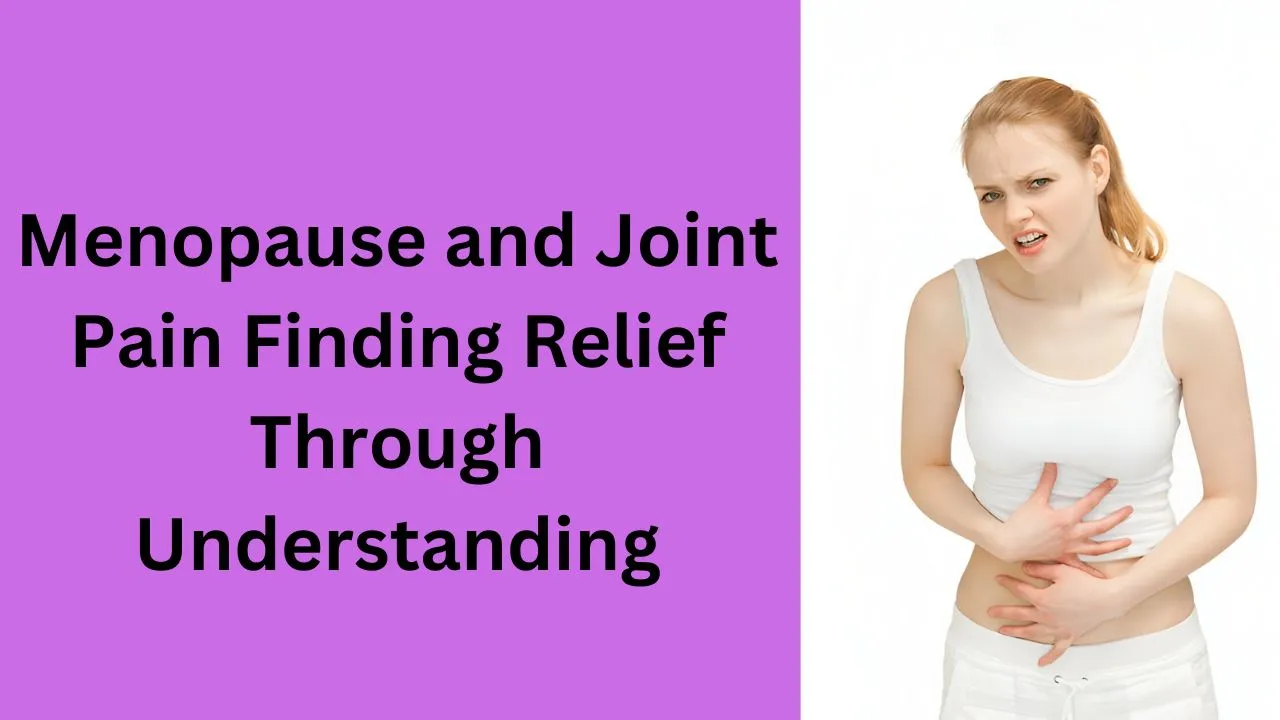The phase of menopause signifies the conclusion of a womans years, as a part of the biological cycle. Throughout this shift hormonal changes take place resulting in emotional adjustments. Joint pain is an issue that numerous women encounter during menopause. It is essential to grasp the relationship, between menopause and joint pain to effectively address and alleviate it.
Are you looking for joint therapy in Orlando? Look no further than Bionic Joints! Our innovative approach offers effective pain relief, enhancing your mobility. Our dedicated team, including top-notch joint pain doctors, prioritizes your well-being. Experience life-changing care and pain treatment options tailored to your needs in Orlando.
Understanding Menopause
Women typically go through menopause, between the ages of 45 and 55 which marks the end of menstruation for a year. This phase is often categorized into three stages; perimenopause, menopause and postmenopause. Perimenopause signifies the period leading up to menopause when hormonal shifts begin to take place. Menopause itself is identified when a woman has not had her period for 12 months. Postmenopause follows menopause. Encompasses the years that come after.
The decrease in estrogen levels is an aspect of the process impacting bone density and joint health. With declining estrogen levels during menopause women may notice changes, in their system possibly leading to discomfort.
The Link Between Menopause and Joint Pain
The symptom that makes a lot of women going through menopause to be painful, this pain sometimes is accompanied by stiffness, joint swelling and discomfort, mostly on the knees, hips and hand joints. Although, not any one in particular is certain by what means the pain is caused, during menopause it is believed that hormonal changes are involved a lot within the process.
Estrogen possesses inflammatory properties and plays a role, in safeguarding cartilage and bone health. With the decrease in estrogen levels post menopause the bodys capacity to heal and support tissue could be affected, potentially resulting in a vulnerability, to pain and inflammation.
Common Joint Pain Symptoms
There is a range in the intensity and frequency of joint pain menopause is associated with. A few women may only find it mildly uncomfortable while the rest may see it getting in the way of their daily activities and their quality of life experience.Common symptoms include:
- One or more joints experiencing discomfort or sensitivity
- Feeling rigid, in the morning or after being inactive
- Swelling or irritation, near the impacted joints
- Limited ability to move or bend easily
- Sensation of warmth or redness in the joint vicinity
Risk Factors
During menopause there are factors that could raise the chances of having pain. These factors comprise:
Age: Inter-articular pain shows tendency to manifest with age, and it is quite common for women to feel it during and after the menopause.
Hormonal changes: What is known is that leaving estrogen levels behind can lead to joint inflammation and pain.
Weight: Added pressure on overweight body causes intense wear and tear on joints worsening the existing pains and discomfort.
Genetics: Genetic background of joint problems often leaves women especially vulnerable to reinforcing these problems via menopause.
Lifestyle factors: Sitting around all the time, bad dietary choices, and the use of tobacco may all lead to joint pain.
Managing Joint Pain
Dealing with pain while going through menopause typically involves a strategy that tackles the root issues as well, as the symptoms. Making changes, to your lifestyle exploring options and trying therapies are all ways to ease the discomfort and enhance your overall well being.
Nutrition and Supplements
Eating a rounded diet with plenty of fruits, veggies, lean meats and whole grains can aid in maintaining joints when going through menopause. Specific nutrients, like calcium vitamin D and omega 3 fatty acids play a role in supporting bone and joint health. Moreover taking supplements such, as glucosamine and chondroitin sulfate might help alleviate discomfort and swelling.
Exercise and Physical Activity
Staying active is crucial, for keeping your joints flexible, strong and mobile. Menopausal women dealing with pain can find relief through activities like walking, swimming, yoga and tai chi. These workouts help build up muscles enhance blood flow and ease pressure, on the joints.
Stress Management
Continuous stress can not only make the pain worse, but it can also inflame and cause it to swell. Through breathing, meditation, and mindfulness which helps in calming the mind, individuals can achieve a lower through rate of their stress.Enhance general wellness. Also among the best ways to ease stress are exercising getting-out-of-doors and communication with people dear to us.
Sleep Quality
Sleeping through the night is very important to the body to regenerate tissues and keep the body healthy, and this certainly plays a part when joint health is concerned. As women nopause or are in menopause they may be having a problem with sleep which can stem from a range of different factors. The creation of a wind-down routine, calming the atmosphere and guaranteeing sleep conditions are the main milestones which enable to achieve a good sleep.
Alternative Therapies
Complementary therapies such as acupuncture, massage therapy, and medicinal herbs have found many people to be alternative ways of dealing with joint pain. Research has shown contrasting results on pain relief and better quality of life but most women positively experience these therapies.
Seeking Professional Help
When joint discomfort continues or greatly hampers your routines it’s crucial to consult a healthcare professional, for guidance. They can assess your situation thoroughly identify any root issues and suggest treatment plans. These could involve using prescription or prescribed drugs engaging in physical therapy or in more serious instances opting for surgical procedures.
Preventive Measures
Practicing preventative measures for joint health before and during menopause can decrease the chance of joint pain developing. These comprise of keeping a healthy weight, being physically active, eating a healthy diet and avoiding activities that may lead to joint strain and injury.
Support Systems
Dealing with the difficulties of menopause and joint discomfort can take a toll, on ones emotions and mental well being. Establishing a circle of loved ones, close friends and medical experts can offer support, advice and comfort throughout this significant period of change.
Conclusion
Menopause is an expected phase, in a womans life. It doesn’t have to mean dealing with severe joint discomfort. By recognizing the connection, between menopause and joint well being and adopting approaches to manage and alleviate symptoms women can move through this period smoothly and comfortably.















